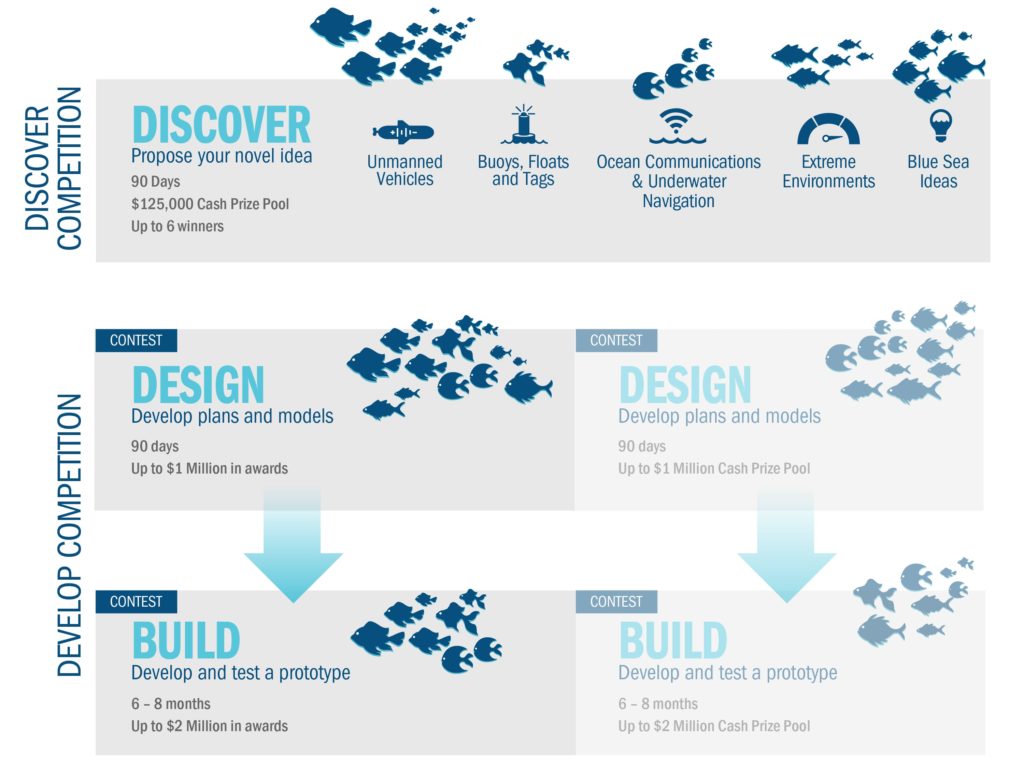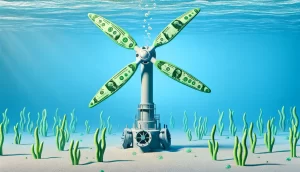The US Department of Energy’s Water Power Technologies Office, in partnership with the NOAA-led Integrated Ocean Observing System (IOOS) has formally announced the $3 million Powering the Blue Economy: Ocean Observing Prize. The competition is designed to incentivize the development of innovative technologies that integrate marine renewable energy with ocean observing technologies to collectively advance both sectors.

The Ocean Observing Prize will have two different competitions. The Discovery Competition is the first contest and is focused on idea generation within five broad ocean observing themes: Unmanned Systems; Buoys, Floats, and Tags; communications and underwater navigation, Extreme Environments, and ‘Blue Sea’ ideas.
The second competition within the Ocean Observing Prize is the Develop Competition which will challenge applicants to actually build and then demonstrate their innovate concepts. All told, the Ocean Observing Prize will last more than a year, and could be repeated several times over the next three to five years.

This Prize was announced today at the OceanObs’19 conference in beautiful Honolulu, HI. OceanObs is a unique conference that takes place every ten years and brings together ocean scientists, researchers, policy makers, technologists, and a wide variety of other stakeholders involved in monitoring and observing the ocean to discuss the latest science and technologies.
The conference has been broken up into several themes that guide the discussion for each day. This announcement was made, fittingly, on the ‘Innovation’ day where presenters advocated for the need to develop new technologies to improve our ability to monitor the ocean.
Existing methods and technologies simply don’t scale well for the immensity of the challenge that is observing the ocean. For example, the Seabed 2030 project which is attempting to map the entire ocean floor will need new technologies that take humans out of the loop in order to accomplish their goal by 2030. This was one of the goals of the recently completed Shell Ocean Discovery X-Prize. But autonomy is just one of the challenges, reliable energy is needed to keep these vehicles on mission and exploring.
As outlined in this two-part series on providing power at sea, options are often times limited, especially in the deep sea. This means that existing ocean observing platforms are often restricted to batteries which provide only a temporary source of energy which limits the number and type of sensors that the platform can host. Hopefully this prize will change that paradigm and remove the constraint of reliable energy at sea.
Ocean observing is a new area for R&D funding for the US Department of Energy, but it appears there is strong support from DOE leadership.
“The United States is a leader in developing next generation marine renewable energy technologies, and this Ocean Observing Prize will demonstrate how marine energy technologies are uniquely suited to power the systems that collect data to expand our understanding of the ocean,”
said Assistant Secretary Daniel Simmons.
This is not the first prize competition to come out of the Water Power Technologies Office. Back in 2016 the office ran the $1.5 million Wave Energy prize which developed new technologies for the wave energy sector. More recently, the WPTO launched theWaves to Water prize, which aims to demonstrate small, modular, cost-competitive desalination systems that use the power of ocean waves to provide clean drinking water for disaster recovery and for remote and coastal communities.
No word yet on when the competition will open, but keep an eye on your newsfeeds and stay-tuned!




